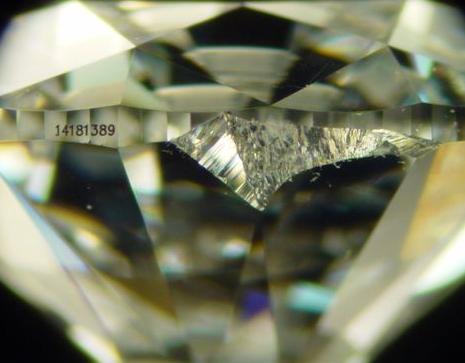Indented Natural: Understanding Its Effect on Diamond Quality
An Indented Natural refers to a specific type of natural feature found in diamonds. It is a portion of the original rough diamond skin that remains embedded within the polished diamond. Unlike typical surface features, such as inclusions or blemishes, the indented natural is located beneath the surface of the diamond, embedded within the body of the stone itself. This unique feature can have implications for both the clarity and polish grades of a diamond, potentially affecting its overall appearance and value.
Formation of an Indented Natural
During the process of diamond cutting and polishing, the rough diamond undergoes several stages of shaping and refinement. Rough diamonds typically have a natural outer surface known as the skin. This skin can contain various imperfections, textures, and irregularities that were present in the diamond as it formed deep within the Earth.
An Indented Natural occurs when part of this rough skin remains in the final polished diamond. It is not confined to the surface but rather is indented into the diamond’s body. This can result in small indentations or depressions on the surface of the diamond that trace back to the rough skin, sometimes appearing as tiny pits or marks that are visible under magnification.
Characteristics of an Indented Natural
1. Location Within the Diamond:
The indented natural is located beneath the surface of the polished diamond, meaning it is a characteristic of the diamond’s internal structure rather than a surface blemish. However, it may still be visible under magnification or when examined closely with specific lighting.
2. Appearance:
An indented natural typically appears as a small, shallow indentation or pit-like feature on the surface of the diamond. The depth and visibility of the indentation can vary, with some indented naturals being subtle and others more prominent.
In some cases, the feature might resemble a natural inclusion, where a tiny portion of the rough skin is visible as an indentation on the polished surface.
In other cases, it may appear as a faint depression or groove, depending on the way the skin was left behind during the cutting process.
3. Size and Shape:
The size and shape of an indented natural can vary based on the specific characteristics of the rough diamond. In general, indented naturals are relatively small and can be found along the diamond’s girdle or even deeper within the diamond’s body. The shape is often irregular, following the contours of the original rough surface.
Impact on Diamond Grading
1. Effect on Clarity Grade:
The presence of an indented natural can affect the clarity grade of the diamond. Clarity is determined by the number, size, nature, and location of inclusions (internal characteristics) and blemishes (external imperfections).
Since an indented natural is considered a natural inclusion rather than a result of cutting or polishing, it may lower the clarity grade.
If the indented natural is visible under magnification or even to the naked eye, it can negatively impact the diamond’s clarity, resulting in a lower clarity grade.
However, if the indented natural is small and located in an inconspicuous area, such as near the girdle, its impact on the clarity grade may be minimal.
2. Effect on Polish Grade:
The polish grade of a diamond is assessed based on the smoothness of its surface. While an indented natural is not typically classified as a blemish or surface flaw, it can still affect the polish grade if it is noticeable on the surface after the diamond has been polished.
If the indented natural is shallow and causes slight imperfections on the surface, it could reduce the diamond’s polish grade.
The presence of an indented natural could also affect the overall symmetry and appearance of the diamond, especially if it interferes with the ideal reflection of light.
Why Indented Naturals Are Important
1. Rarity and Natural Beauty:
An indented natural is a reminder of a diamond’s natural origin. It highlights the process that a diamond undergoes, from rough formation deep within the Earth to its final polished state. While many diamonds are meticulously cut and polished to remove any traces of the rough, indented naturals provide a glimpse into the diamond’s history. This feature can appeal to those who appreciate the raw beauty and uniqueness of a diamond with natural characteristics.
2. Impact on Value:
Because an indented natural affects the clarity and polish grades, it can have an effect on the value of the diamond. In general, diamonds with higher clarity grades and flawless polish are more valuable than those with noticeable inclusions or surface imperfections.
However, if the indented natural is small and located in an area that is not highly visible (such as the girdle), the effect on value may be less significant.
Some buyers may prioritise other factors, such as cut, carat weight, or colour, over the presence of an indented natural, especially if it is not immediately noticeable.
Identifying an Indented Natural
To identify an indented natural, a gemmologist will typically examine the diamond under magnification using a loupe or microscope.
Key Tools for Detection:
Loupe: A jeweller’s loupe is a small magnifying glass that allows for detailed inspection of diamonds. It can help identify features like an indented natural.
Microscope: A more powerful tool, the microscope provides a highly detailed view of the diamond, allowing for the identification of even the smallest natural features, including indented naturals.
An experienced gemmologist will be able to distinguish an indented natural from other inclusions or surface flaws and assess its impact on the diamond’s grading.
